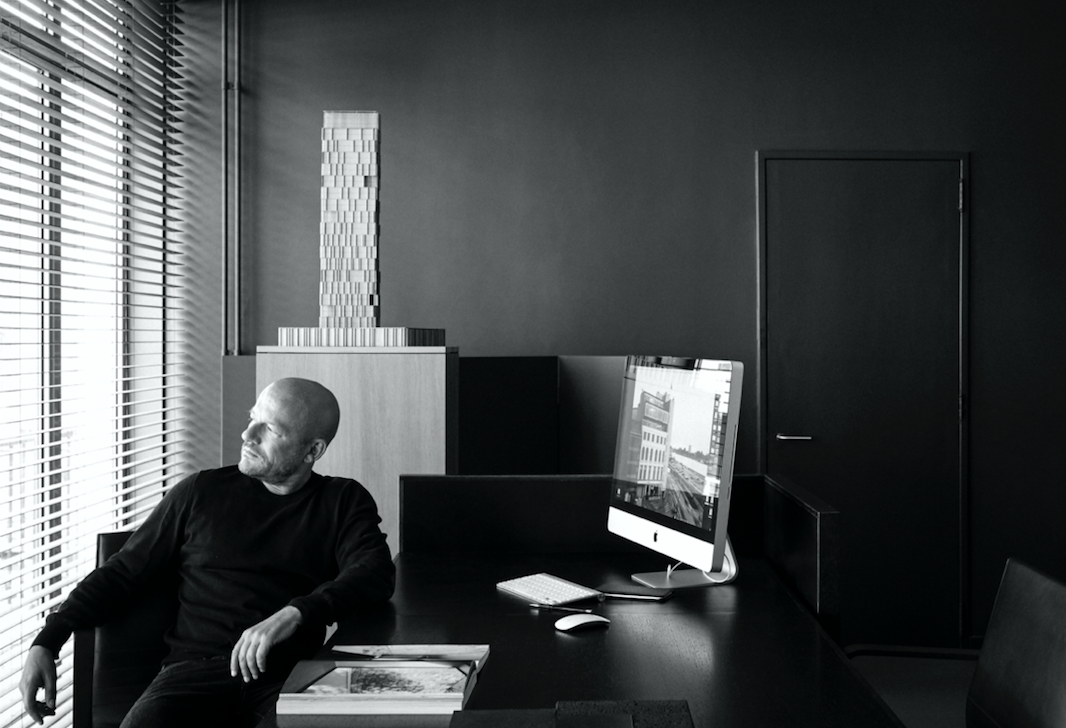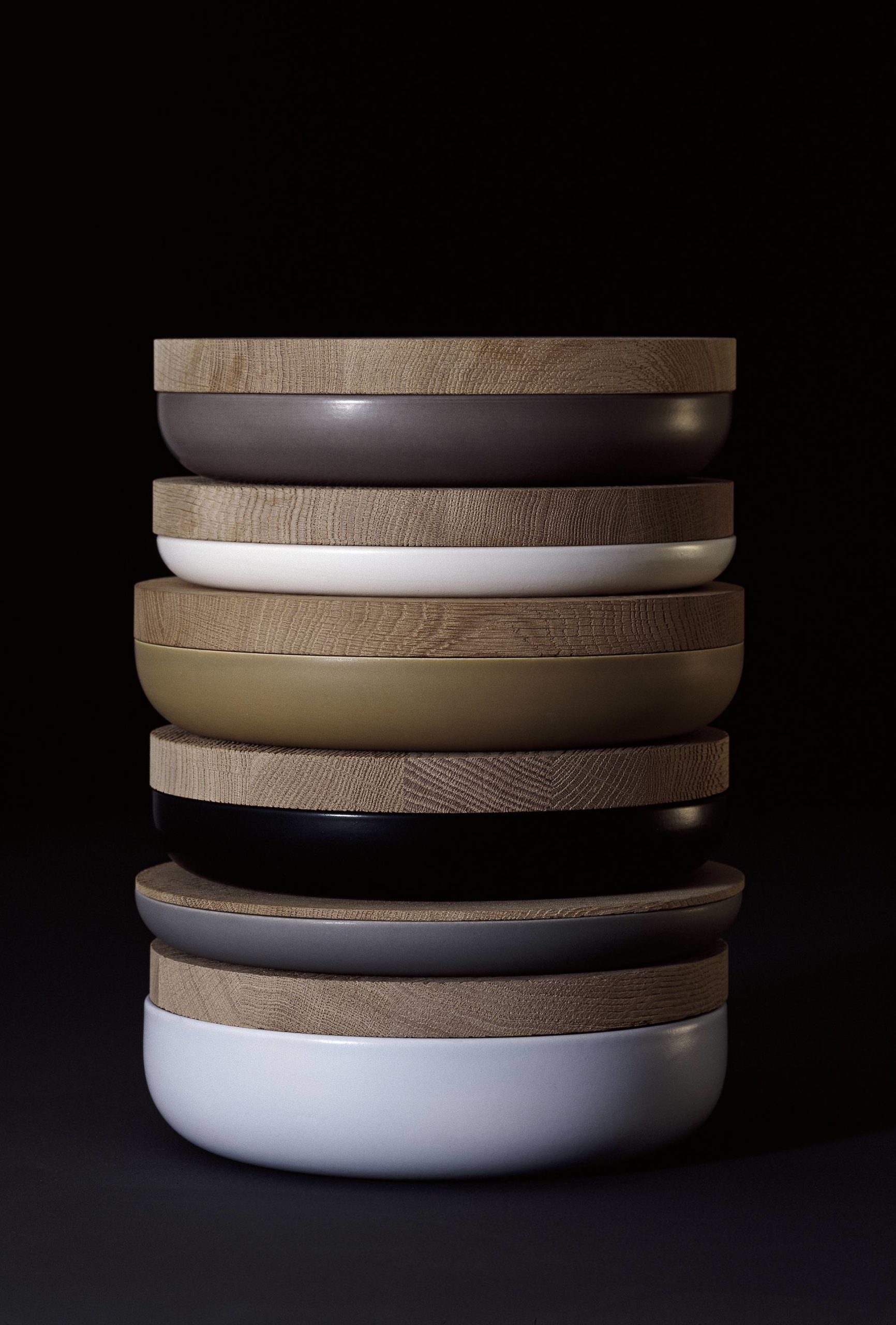The architect and designer Vincent Van Duysen has just celebrated his one-year anniversary as Molteni&C’s creative director. “So far, it has been super-intense, very proactive,” he told us on a recent visit to New York. But his interest in the brand dates back to 1985, when he graduated from the Architecture Institute Saint-Lucas in Ghent and first moved to Milan. He thought Molteni&C reflected the epitome of Italian design. He recalls visiting their booth at Salone del Mobile, noticing pieces by Aldo Rossi, color schemes and materials, and a refinement and craftsmanship that was present but discrete. Molteni&C wasn’t a fashionable label that followed trends, but one that understood the Italian culture of manufacturing beautiful furniture pieces with a rigorous identity. Since his appointment, Van Duysen has launched a new bed for the brand titled “Anton,” designed their and Dada’s booths at Salone del Mobile 2017, added new products to his tableware collection for When Objects Work, was awarded the Flemish Culture Prize for Design 2015 and the Designer of the Year Prize 2016 at the Silver Jubilee edition of Interieur Kortrijk (Biennale Interieur). Van Duysen shared with us his thoughts about his responsibilities as an architect and how his art collection reflects his interests.
WHITEWALL: What was your relationship with Molteni&C like leading up to your becoming the creative director? VINCENT VAN DUYSEN: The moment that they contacted me to become the creative director was the result of a collaboration—one that was related to an interior project I was working on for a 10,000-square-meter office space in Riyadh, Saudi Arabia, with a Saudi architect. One of the requests of the clients was that the interiors, and all of the customized pieces, would be executed by an Italian company. We contacted about four big Italian furniture, and Unifor, a part of Molteni Group, got the job. They had contacted me previously as well, wondering if I was interested in developing some furniture for them. But at that moment, it wasn’t the right time. After the project in Riyadh, they asked me again, and then asked me to review their cupboard systems. They hadn’t been updated for a few years, so we started to develop the new collection, which is called “Gliss Master.” Simultaneously, they asked me to design a bed, The Ribbon Bed. When we were approaching the Internationale Möbelmesse (IMM) furniture fair in Cologne, Germany in January 2016, they asked if I would be interested in designing the booth for them. They wanted to show my architectural skills to say that Molteni&C is not only about creating beautiful pieces that are timeless and rigorous and architecturally designed, but also about the possibility of creating an architectural ambience that shows my vision of the art of living. The response to that booth was a huge success. Within one month, they asked me if I would be interested in being their creative director. I was very honored and very surprised. For such a major company to ask a non-Italian to be their creative director was just . . . wow.

Vincent Van Duysen.
Photo by Frederik Vercruysse.
WW: Recently, after 30 years of working in the industry, you were honored as Designer of the Year at the Silver Jubilee edition of Belgium’s Biennale Interieur. VVD: It was an award that I received from the hands of the minister of culture of Belgium, so it was definitely a great way to recognize my career of 30 years of hard work and contributing to the culture of my own country and to represent and be an ambassador for Belgium. As an architect, it’s been very unusual to be broader than just the building process. In the beginning of my career, people were wondering if I was an architect or an interior architect or decorator, and I always went forward and never said I should stick to one thing. I also create spaces for products that belong to that space, and that’s something that has been true since the beginning of my career. I’ve always been far away from and aware of trends—and always to the essence of the art of living. The goal is always to create architectural environments that are very contemplative and calming. We’re living in a world that’s fast track, wanting immediate results, and I am now trying to slow down the senses. I want to make people feel aware of who they are. My responsibility as an architect is to transmit that awareness. WW: You also redesigned Molteni’s flagship store on Madison Avenue, which is set to open later this year. It’s 3,900 square feet spread over two floors, has four big openings, and utilizes materials like glass, walnut wood, Travertino stone, and textured plaster. VVD: All of the key ingredients that I’ve used were beautifully made. It’s all about ultimate craftsmanship. I want to reflect the grandeur of a Milanese house on Madison Avenue. The building isn’t a townhouse or a mansion—it’s a commercial place—but I will reflect that grand Milanese feel with a New York touch. We’ll have the “home” feeling. It’s not necessarily dealing with sizes of rooms, but even in one single room that is not too big we can conceive a kind of loft atelier living space. We don’t want it to become a soulless showroom. It’s completely the opposite.
WW: Can you tell us about “Pottery,” the new additions you made to your tableware collection for When Objects Work? VVD: The collection is a sequel of the pottery collection that I designed 12 years ago, which has been a big, big hit since the beginning. We made so many variations since then—the colors, the lids, modified dimensions, bringing in new materials, everything. But after about the 10-year anniversary of the collection, Beatrice de Lafontaine, the owner and director of When Objects Work, asked if I’d be interested in extending the collection. It was not my goal to reinvent a plate or a glass. The pottery itself has a very sensual, archetypal form. When you have it in your hands, the weight, radius, textures—I wanted to continue and rescale that and turn it into plates. I also presented the pottery with the possibility of stacking it and putting it on the shelf so that when you stack them they not only become useful, functional items, but they become a sculpture piece in whatever environment. WW: Can you tell us about the art you personally collect? Is there a focus? VVD: I have been very, very lucky with the pieces that I bought. I would say that my major piece in my bedroom is a Thomas Houseago that I bought almost 10 years ago. It’s a mask on a wooden stand with one eye open and one closed. I like the anatomy of his work—it’s very human and expressive. It also sometimes reminds me of ancient Greek culture, and it has something very existential about it. For me, it’s very protective, and with one eye open and one eye closed, it’s very symbolic. I have a very small, subtle gouache from Yayoi Kusama from the fifties. I love it because it’s a very pure little thing that I also bought years ago. It’s black wash with seeds that blossom. It’s very impressionistic and absolutely beautiful. This is the more fragile part of what I see for my interiors. It’s a gem, and it softens up the big space. Another piece is by Katja Strunz. She’s German and represented by Almine Rech. It’s a very architectural work—almost like a console that floats against the wall. It’s pointed out and has facets and wood, and the top of it is painted in matte black. It’s sharp, three-dimensional, and there’s something very sexy about it. One of my recent ones is a Sterling Ruby—a cardboard collage that is kind of pyramid-like, and it very much relates to my architectural world. It has these green and red colorful patches, and has these traces of his atelier on it. I love his work because it’s distressed, and it floats from the walls. Those are the four works that are very energetic, interacting with each other, and belong to my world, as well. From the delicate to the edgy, it covers a lot of who I am. I need to live with these works, to be honest. I don’t collect because of the name, but it reflects who I am and what I’m interested in. They show a big appreciation of the message that the artist wanted to transmit through their work, and I’m connected with that message.

Pottery collection by Vincent Van Duysen for When Objects Work.
Courtesy of Vincent Van Duysen and When Objects Work.








